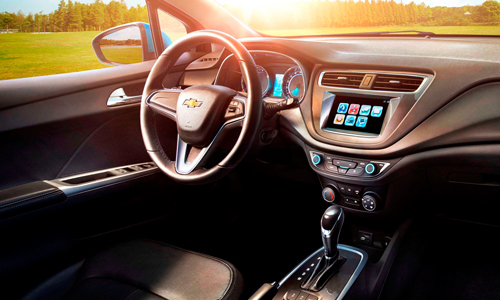The market for polyurethane materials is expected to witnessed substantial growth and is likely to witness high growth rates over the forecast period on account of increasing use of PU for the manufacture of insulating carpets and PU foam for sound deadeners in passenger cars and commercial vehicles. Polypropylene is the most widely used thermoplastic on account of light-weight, chemical stability, low density and thermal stability. The increasing use of PP in automotive applications for noise and friction insulators, carpet fibers, bumpers, and gas tanks is expected to drive the market for the material over the forecast period. The automotive flooring industry is highly competitive on account of the presence of several large manufacturers, integrated across the most significant components of the value chain. Furthermore, the threat of new entrants in the industry is low, on account of several factors. The need for high initial capital investments; presence of several product manufacturers in key regions of North America, Europe, and Asia Pacific; and the presence of stringent regulations regarding fuel efficiency, safety, noise emissions, vehicles safety, and fuel economy, together, pose several challenges to new entrants in the industry. Material Insights The nylon segment accounted for the largest share of industry revenues in 2016. Cast products offer high heat & impact resistance, optical clarity, and a higher strength-to-weight ratio. Nylon fiber is the most commonly used material type for automotive flooring on account of its flexibility, light-weight, strength and lower cost. This segment is projected to grow at a CAGR of 4.6% during the forecast period. Polyurethane accounts for a significant market share and is projected to grow at a CAGR of 6.0% during the forecast period, owing to the increasing use of PU for the manufacture of auto components and flooring products. The superior chemical and mechanical properties and growing demand for noise insulating materials is expected to drive polyurethane demand during the forecast period. Polypropylene is largely used for the manufacture of interior and exterior components, such as films, fabrics, coatings, and seat fabrics. The superior material properties, as compared to rubber and nylon, coupled with low costs associated, are expected to drive the demand for this material in the flooring industry. Rubber mats offer better oil resistance, noise and vibration insulation and absorption in automobiles on account of the high-density and consistency of rubber. As a result, rubber is also expected to witness substantial growth in the flooring industry during the forecast period. Product Insights The carpets segment accounted for the larger share of industry revenues in 2016. Floor carpets are used for the protection of car floor from structure-borne noises, frictions and heat in order to make the car ride quiet and comfortable. The absorption of noises from internal factors primarily engine sounds and vibrations is crucial to improve overall ride quality. The increasing vehicle production, globally, is expected to have significant impacts on the overall demand for carpets in the automotive industry, thereby driving the product segment growth. The automotive industry has also been witnessing substantial demand for customized carpeting solutions for enhancement of aesthetic value of passenger cabins. The mats segment is slated to grow at the higher CAGR of 6.0% during the forecast period. The growth can be attributed to the increasing demand for noise reduction mats, coupled with the shifting focus of car manufacturers towards improving ride quality, enhancing comfort levels and improving the durability. Application Insights The key application segments considered in the industry analysis are passenger cars, light commercial vehicles (LCV), and heavy commercial vehicles (HCV). The overall industry was dominated by the cars segment, mainly on account of the larger share accounted for by this segment in the overall vehicle production worldwide. Automotive flooring products segment for passenger cars accounted for the largest share and is expected to further grow on account of increasing production of and demand for passenger cars in developing countries such as China, India, Mexico, Indonesia, and Brazil. The growing demand for automobiles in developing countries can be attributed to the rapid industrialization, increasing working population, and growing middle-income level groups. The growing importance of heat and noise insulation in crossover Sports Utility Vehicles (SUVs) and off-roaders in order to improve the vehicle durability, ride-quality, comfort and safety is expected to drive the demand for automotive flooring during the forecast period. Regional Insights North America accounted for a substantial share of the overall industry revenues, mainly owing to the recovery of the U.S. automotive industry as well as the growing automobile production in Mexico and the U.S. Mexico is expected to drive the regional market growth, projected to grow at a CAGR of nearly 6% during the forecast period. The European region recorded the second-largest share of the industry in 2016, and is expected to remain a major market for flooring products during the forecast period. This can be attributed to the increasing luxury cars production in Germany, combined with the growing automotive industry in emerging countries such as Czech Republic, Poland, Turkey, and Russia. The Asia Pacific region accounted for the largest share of the flooring industry in 2016. This regional market is also expected to witness the highest growth, slated to grow at a CAGR of 5.9% during the forecast period. The increasing automotive production in China, India, and South Korea, combined with growing need for enhanced passenger comfort and safety in cars, is expected to drive this regional industry growth during the forecast period. The Brazilian market is expected to recover from the industry decline over the past few years, mainly on account of the latest agreements with Argentina, Colombia, Uruguay, and Paraguay, which is expected to drive the exports of vehicles from Brazil to the aforementioned countries of the Central & South American region. Source:https://www.grandviewresearch.com/industry-analysis/automotive-flooring-market
